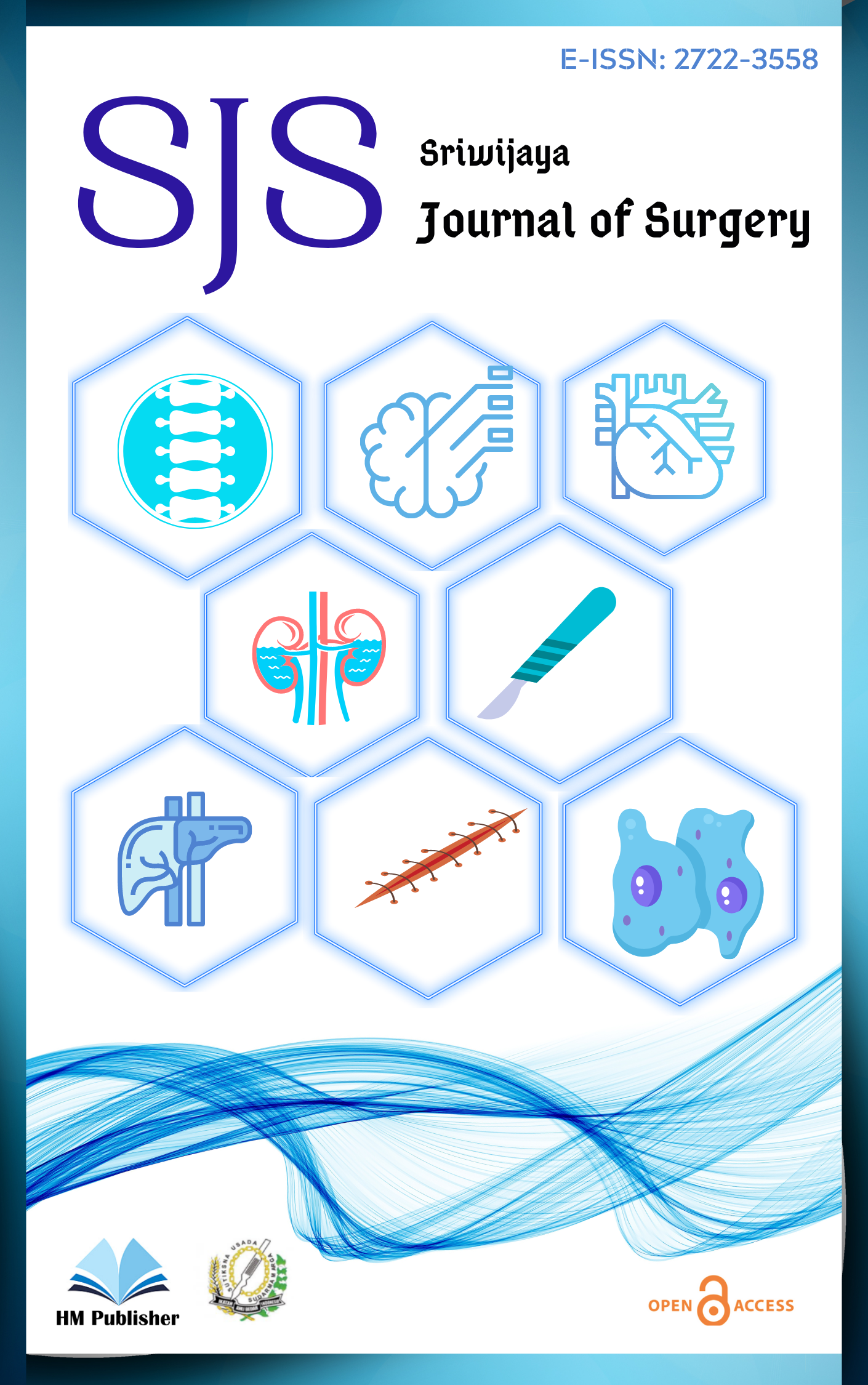Main Article Content
Abstract
Introduction: The assessment of health-related quality of life (HRQoL) is a paramount outcome in breast cancer survivorship, yet the interplay of disease-specific, treatment-related, and patient-level factors is not fully understood in Southeast Asian populations. This study aimed to comprehensively model the predictors of HRQoL and fatigue by simultaneously evaluating clinical, surgical, and sociodemographic variables among Indonesian breast cancer patients.
Methods: A cross-sectional study was conducted with 102 female breast cancer patients undergoing chemotherapy at Dr. Mohammad Hoesin General Hospital, Palembang, Indonesia. Data on clinical variables (AJCC stage, chemotherapy cycles, treatment intent), surgical procedures (breast and axillary surgery type), and sociodemographic characteristics were collected. HRQoL was assessed using the validated Indonesian versions of the Functional Assessment of Cancer Therapy-General (FACT-G) and Functional Assessment of Chronic Illness Therapy-Fatigue (FACIT-F) questionnaires. Bivariate correlations and a hierarchical multivariate linear regression analysis were performed to identify significant independent predictors of FACIT-F scores.
Results: The cohort was characterized by advanced disease (Stage III/IV: 62.7%) and aggressive surgical management (Mastectomy: 75.5%; Axillary Lymph Node Dissection: 68.6%). In the multivariate analysis, several factors emerged as significant independent predictors of poorer HRQoL. These included advanced cancer stage (β = -0.41, p < 0.001), having undergone a mastectomy versus breast-conserving surgery (β = -0.28, p = 0.002), having had an axillary lymph node dissection versus sentinel node biopsy (β = -0.25, p = 0.005), and a higher number of chemotherapy cycles (β = -0.19, p = 0.018). The final model explained a substantial portion of the variance in HRQoL (Adjusted R² = 0.58). In contrast, sociodemographic factors including age, income, and education were not significant predictors in the final model (p > 0.05).
Conclusion: HRQoL in this cohort is not determined by a single factor but by a triad of distress: the biological burden of the disease (stage), the physical and psychological morbidity of surgical treatment, and the cumulative toxicity of chemotherapy. These treatment-related realities powerfully override the influence of sociodemographic characteristics. These findings mandate a paradigm shift towards an integrated supportive care model that proactively addresses surgical morbidity alongside systemic side effects from the point of diagnosis.
Keywords
Article Details
1. Authors retain copyright and grant the journal right of first publication with the work simultaneously licensed under a Creative Commons Attribution License that allows others to share the work with an acknowledgement of the work's authorship and initial publication in this journal.
2.Authors are able to enter into separate, additional contractual arrangements for the non-exclusive distribution of the journal's published version of the work (e.g., post it to an institutional repository or publish it in a book), with an acknowledgement of its initial publication in this journal.
3.Authors are permitted and encouraged to post their work online (e.g., in institutional repositories or on their website) prior to and during the submission process, as it can lead to productive exchanges, as well as earlier and greater citation of published work.

